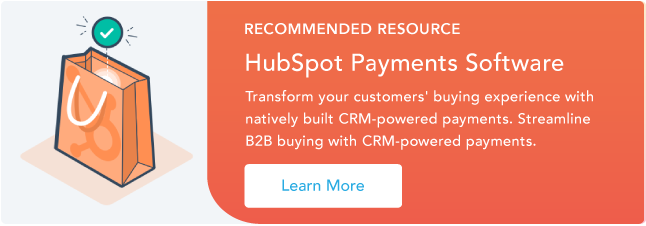If you want your business to get in on some of those billions, read on to learn what eChecks are and how they work. Then we’ll cover answers to the most common questions about eChecks, and show you how to get started accepting eChecks in minutes.
How does eCheck work?
eChecks allow banks to transfer money directly from one account to another. To do this, they use an electronic network called the Automated Clearing House or ACH. The ACH network connects all banks within the U.S., and moves around $72.6 trillion per year, according to Nacha (formerly the National Automated Clearing House Association).
To make sure all that money gets where it’s supposed to, the eCheck process takes several steps:
- Payment Authorization - First, the customer enters their bank account information and authorizes payment. This is usually done through an online payment gateway. The authorization can be for a one-time purchase or a recurring subscription.
- Payment Request - The business’ payment processor uses the customer’s account info to create a payment request. At certain times each day, the processor sends batches of these requests to the Automated Clearing House.
- Payment Confirmation - The ACH sorts the batches and forwards the payment request to the customer’s bank. The bank verifies the details and confirms the funds are available.
- Payment - Once the transaction is verified, the money is transferred from the customer’s account to the business’ account.
Here’s a screenshot of what an authorization might look like.

eChecks can also work in reverse; for example, with direct deposit payroll or online tax refunds. In this case, the recipient provides their bank account information and authorizes a deposit instead of a withdrawal.
These steps may sound complicated, but they’re still faster than processing a paper check. And unlike a paper check, which passes through multiple hands, the banking data is encrypted throughout the entire process.
Benefits of eCheck Payment Processing
eChecks come with a variety of perks that make them attractive to businesses and customers alike. If you’re thinking about accepting this type of payment, consider the following:
- They’re more secure than paper checks or credit cards. According to the Federal Reserve, payments made through the ACH network have the lowest rate of fraud by value.
- They cost less than credit cards. eCheck fees typically fall between 0.5% to 1.5% of the transaction amount. Compare that with credit card processing fees which average 1.5% to 3.5%.
- They enable recurring payments. eChecks are an affordable way to offer your customers monthly subscriptions or auto-pay options.
- They’re more reliable than cards for recurring payments. eChecks rely on bank account information, instead of credit card numbers that can get lost, stolen, or expired. This means payments are less likely to be rejected.
- They’re faster than paper checks. eChecks typically take 3-5 business days to process. They’re usually done before a paper check even arrives in the mail.
Frequently Asked Questions About eChecks
How much does eCheck cost?
The cost of eCheck processing depends on the payment processor you choose. Some charge a flat fee, which usually runs between $0.20 to $1.50 per transaction. Most charge a percentage of the transaction amount, which averages between 0.5% to 1.5%.
For example, with HubSpot payments, you pay only 0.5%, with a cap of $10 per transaction.
Are eChecks processed immediately?
ACH rules require payment requests to be processed within 24 to 48 hours. That’s not to say you’ll receive your money that quickly. After the request is made it must be processed by both banks, as well as the ACH network itself.
How long does eCheck take to process?
Generally, eCheck payments take 3-5 business days to process. Once a payment request is made, it must be sent through the ACH network, then verified by the customer’s bank. After that, the merchant’s bank may hold the money for 24 hours while it performs its own security checks.
Is eCheck Secure?
eChecks are one of the most secure methods of payment available. In fact, they have the lowest rate of fraud by value, according to the Federal Reserve. Payments made by ACH average only 8 cents of fraud for every $10,000.
Is eCheck the same as a debit card?
Though they both connect directly to your bank account, eCheck isn’t the same as a debit card. Debit cards rely on a credit card network, while eCheck payments go through the Automated Clearing House (ACH) network.
As a result, debit card payments are available much faster but will typically incur higher fees.
What is the difference between ACH and eCheck?
The terms eCheck and ACH are often used interchangeably. Technically, ACH refers to the network that is used to make payments, while eCheck refers to the payment itself. For this reason, eChecks are also sometimes referred to as “ACH payments.”

How to Accept eCheck Payments
To get started accepting eChecks, you’ll need a merchant account or third-party payment processor. You’re probably already familiar with processors like PayPal, Stripe, or Square.
Next, you’ll need a way to securely collect your customers’ banking information. This involves a bit of software called a payment gateway. The gateway can be a form that lives on your website, or a button that redirects to a secure checkout site. Most payment processors will offer a gateway as part of their service, or for an added fee.
Pro Tip: Sales Hub users with a Starter account or above can get both of these services at no extra charge.
The HubSpot payments tool lets you accept eChecks right from your website. Or send your customers a secure payment link within a quote, invoice, or email. And since it’s already integrated with the HubSpot CRM, you can set up automated payment workflows, or instantly update your customer accounts with payment history.
There are no monthly fees, setup charges, or minimums. You pay only 0.5% of the transaction amount, capped at $10 per transaction, so you only pay for eCheck processing when you need it.
Setting up your account takes only minutes, and most businesses can start accepting eChecks within 1-2 business days.
eChecks Make it Easy
With eChecks, you’re not doomed to the dinosaur age. The low fees and high security make it easy and affordable to offer your customers more payment options.
Payments





![All Types of Payment Methods Business Owners Need to Know [+Data]](https://53.fs1.hubspotusercontent-na1.net/hubfs/53/typesofpayment.webp)
.webp)


![ACH API: What it is + How to Use it [+ Who Should Not]](https://53.fs1.hubspotusercontent-na1.net/hubfs/53/ach-api.jpg)
![What is ACH credit [+ Is It Safe to Use?]](https://53.fs1.hubspotusercontent-na1.net/hubfs/53/what-is-ach-credit.jpg)

